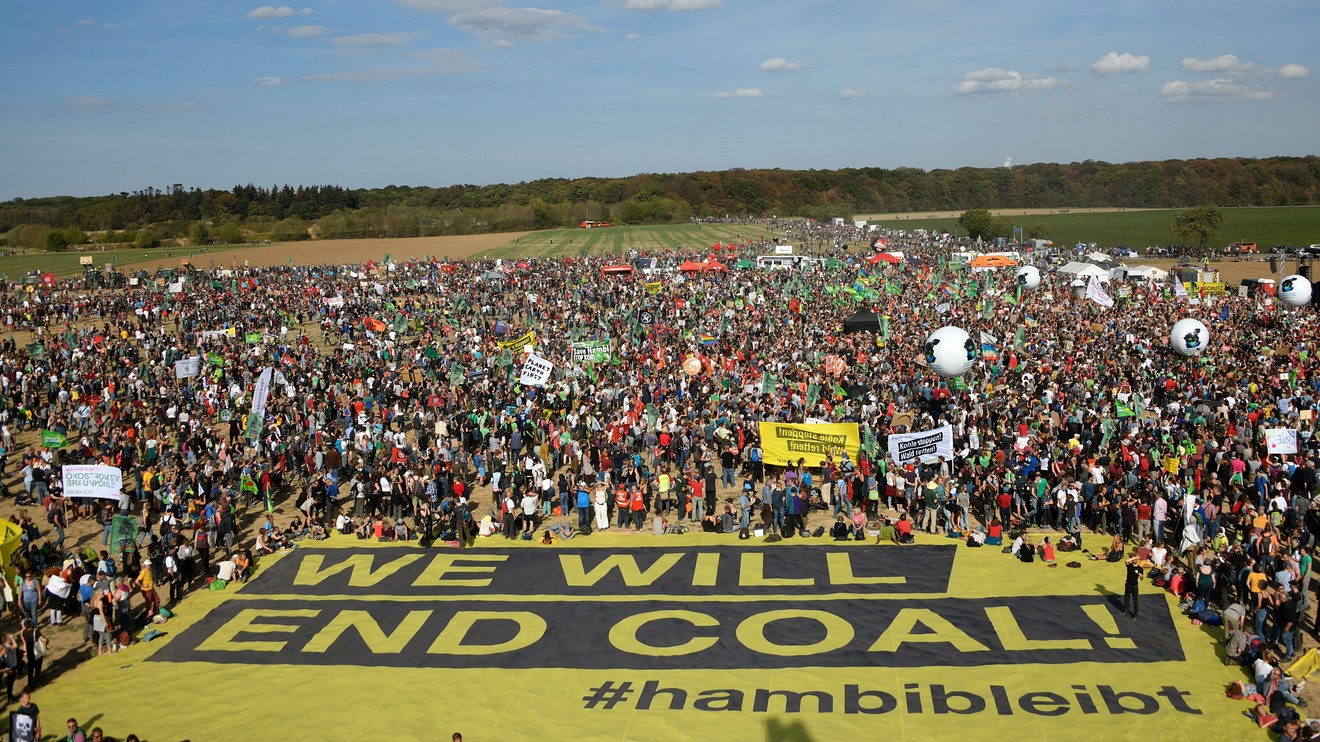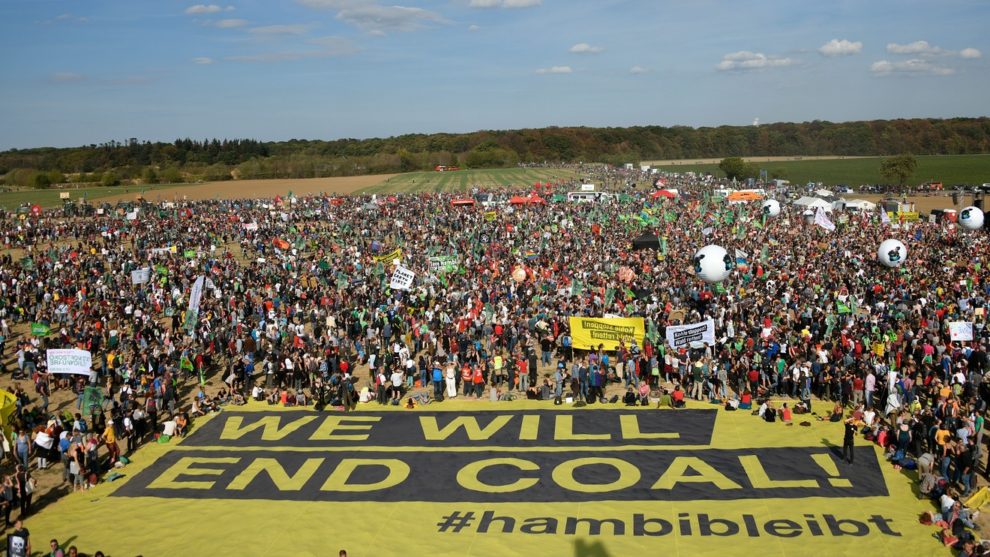
Evidence of the increasing effects of climate change is building, as are the investing opportunities and changes in consumer habits linked to environmental concerns and resource use. Here are select dispatches about the companies responding to customer demands and climate risk, the ESG investors and their advisers, and the policy-makers, enterprising individuals and scientists preparing for tomorrow.
German coal-burning utility giant sets 2040 carbon-neutral target. RWE AG RWE, +0.42% , Europe’s biggest carbon-dioxide emitter and a repeat target of activists, claims it can become climate neutral by 2040. To do so, the German utility, which has already divested in part in favor of renewable energy, will shutter its remaining coal-fired power plants.
CEO Rolf Martin Schmitz on Monday said the utility would cut its carbon emissions by 70% by 2030 compared with 2012 levels. It will decommission its last U.K. coal plant next year and convert two facilities in the Netherlands to burn biomass. RWE will still operate six coal-fired plants in Germany, but has earmarked 1.5 billion euros ($1.64 billion) per year to expand in renewables.
“This presents RWE with a huge task. But we have a very clear idea of how to achieve our goal: We will phase out fossil energy sources both consistently and responsibly,” said Schmitz. We will make huge investments in wind and solar power as well as in high-capacity storage technologies. The new RWE is and will remain one of the major players in the electricity generation business.”
A few years ago, the company spun off its renewables business into a separate company called Innogy, which E.ON acquired last year in a complex deal that gave RWE a 17% stake in E.ON.
RWE’s transformation will be reflected in its earnings as well. Going forward, only 20% of EBITDA (adjusted earnings before interest, taxes, depreciation and amortisation) will come from the conventional business. About 60% will be earned from business with renewable energies, while energy trading will be contributing 10%. The remaining 10% will come from financial investments, the company said.
Even with the big announcement, that calendar target may be too late, said Karsten Smid, an energy expert at Greenpeace, talking to the Financial Times. “European climate goals and the growing efficiency of renewables mean that the last coal power station will have to be closed long before 2040,” Smid said.
Read: Trump’s hatred for windmills looms over one of the nation’s fastest-growing energy sources
Street fight. As part of a safe streets program, officials in the East London borough of Tower Hamlets closed a road to auto traffic for 10 days. But things didn’t go as planned in this neighborhood where economic challenges are on par with environmental urgency, City Lab reported. Residents breathe in the exhaust from nearby major highways, a level of pollution that bumps up against allowable European Union levels. The neighborhood is also a truck and van shortcut from one major road to another.
But even in the city known for enacting some of the most progressive urban transportation policies in the world, the car won the day in this low-income neighborhood. Furious motorists, taxi drivers, and business owners besieged the barriers that had been erected across the street; the pilot lasted about 8 hours, the report says.
Hard stance against concrete. A group at the Architecture of Emergency climate summit in London have identified an unlikely drag on Earth’s long-run health: concrete. “If we invented concrete today, nobody would think it was a good idea,” said architectural engineer and panel member Michael Ramage, according to tech site Bigthink.com. “We’ve got this liquid and you need special trucks, and it takes two weeks to get hard. And it doesn’t even work if you don’t put steel in it.”
The 4 billion tons of concrete produced for construction each year accounts for 8% of the world’s carbon dioxide emissions, but architectural experts haven’t been particularly concerned about this figure until recently. That’s in large part because of concrete’s longevity corrupting the most common calculation for a given building’s green impact. One of the suggestions at the conference for a concrete replacement is perhaps surprising: timber. Unlike concrete, timber stores carbon dioxide, lowering a building’s overall carbon footprint.
Don’t miss: Climate change could impact your mortgage even if you live nowhere near a coast
Read: The No. 1 reason to become a vegan — it’s not about your health
Oceans study retracted. The prestigious journal Natureretracted a study published last year that found oceans were warming at an alarming rate due to climate change. “Shortly after publication, arising from comments from Nicholas Lewis, we realized that our reported uncertainties were underestimated owing to our treatment of certain systematic errors as random errors. Despite the revised uncertainties, our method remains valid and provides an estimate of ocean warming that is independent of the ocean data underpinning other approaches,” the authors stressed.
Lewis, a mathematician and critic of the scientific consensus supporting the climate crisis, posted a critique of the paper shortly after its publication. Co-author and climate scientist Ralph Keeling at Scripps has taken the blame for the mistake. The report used a new approach to measure the ocean’s temperature based on measuring the amount of oxygen and carbon dioxide rising off the oceans’ plants. Much of the data on ocean temperatures currently relies on the Argo array, robotic devices that float at different depths.
Read: Metals billionaire Andrew Forrest is making a $300 million bet on the next big commodity — plastic











Add Comment